Welcome to today’s exciting exploration into the captivating aquatic world of Teacup Stingrays. One look at this unique breed, scientifically known as Potamotrygon reticulata, and the Stingray will quickly swim into your heart. Did you know that stingrays, particularly the Teacup variety, hail from varied locations, including Columbia, Surinam, and Brazil? Today, you’re about to uncover more intriguing facts about this breed!
Teacup stingrays are a fascinating group of freshwater fish known for their small size and distinctive shape resembling their oceanic relatives. While they may appear diminutive, these stingrays demand considerable care and understanding due to their sensitivity to water conditions and intricate biological needs. As bio-indicators of their environment, teacup stingrays thrive when nitrates and ammonia levels are kept vigilantly low, a testament to their requirement for immaculate water quality.
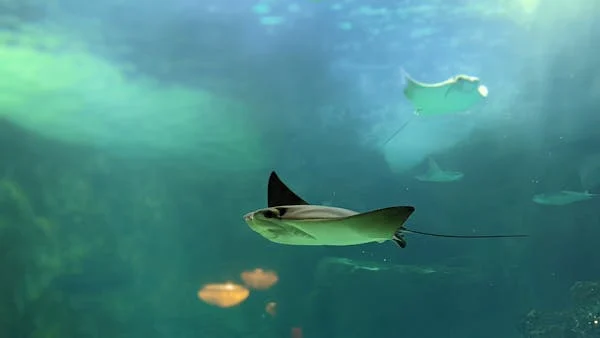
These freshwater stingrays, often no larger than 8 inches in disc width as mature adults, exert a large bioload because of their waste production. Such a trait necessitates large tanks––nothing less than 125 gallons––to accommodate their active lifestyles and to dilute toxins effectively. A notable characteristic of teacup stingrays is their preference for sprawling out along the tank bottom, which is why aquarists must provide them with a habitat that mimics their natural, sandy riverbeds with ample horizontal space to roam.
An aquarist intent on maintaining teacup stingrays must be thorough with regular water changes and have a tank setup emphasizing the species’ penchant for bottom dwelling. Their tanks should have fine sand substrates for burrowing and appropriate hiding places. Observing these essentials in tank design and care can lead to the successful keeping of teacup stingrays, ensuring their health and longevity in captivity.
Taxonomy and Species
This segment illuminates the teacup stingray’s taxonomic classification and geographical roots within the broader scope of its genus and South American lineage.
Potamotrygon Genus
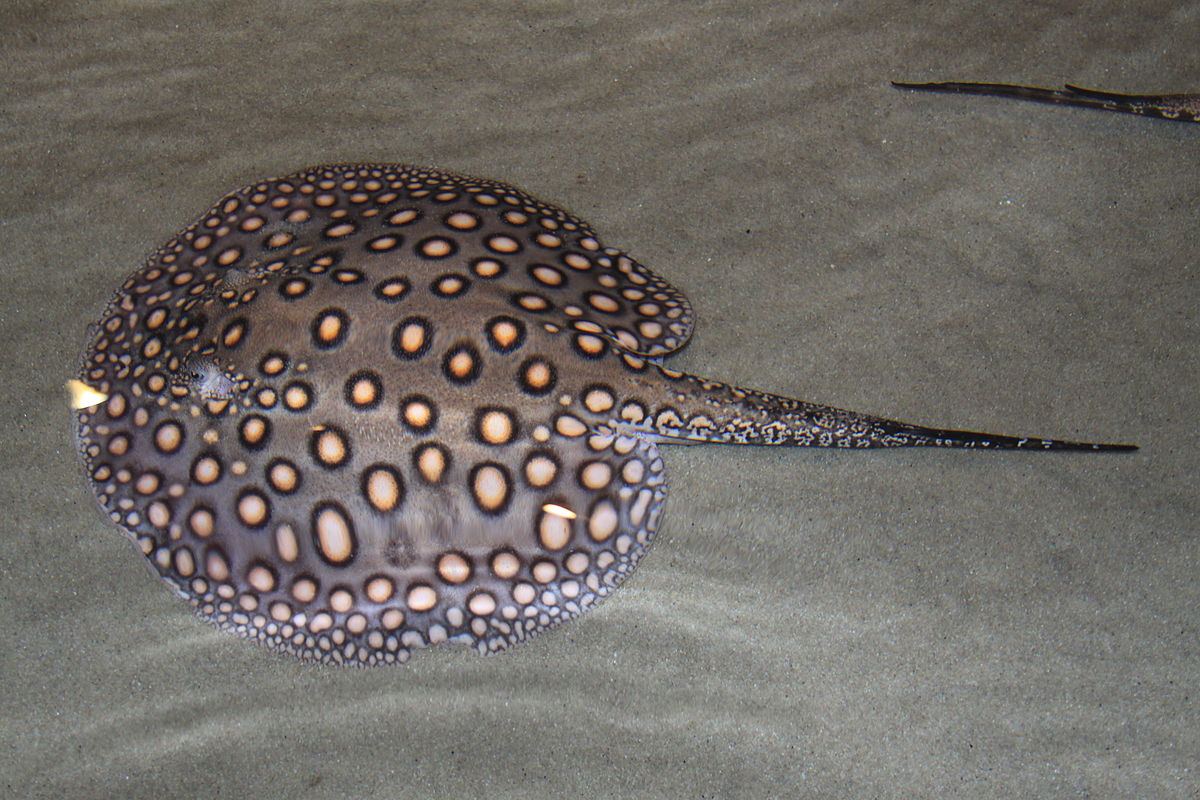
Teacup stingrays fall under the diverse genus Potamotrygon, distinct to freshwater environments. Recognized for their size and patterns, they are differentiated from their marine counterparts through notable physiological and ecological traits.
South American Origin
Native to South America, the Potamotrygon genus thrives in river basins such as the Amazon and Orinoco. The habitat’s slightly acidic to neutral pH levels cater to the biological needs of species like the teacup stingray, ensuring their optimal growth and well-being.
Physical Characteristics
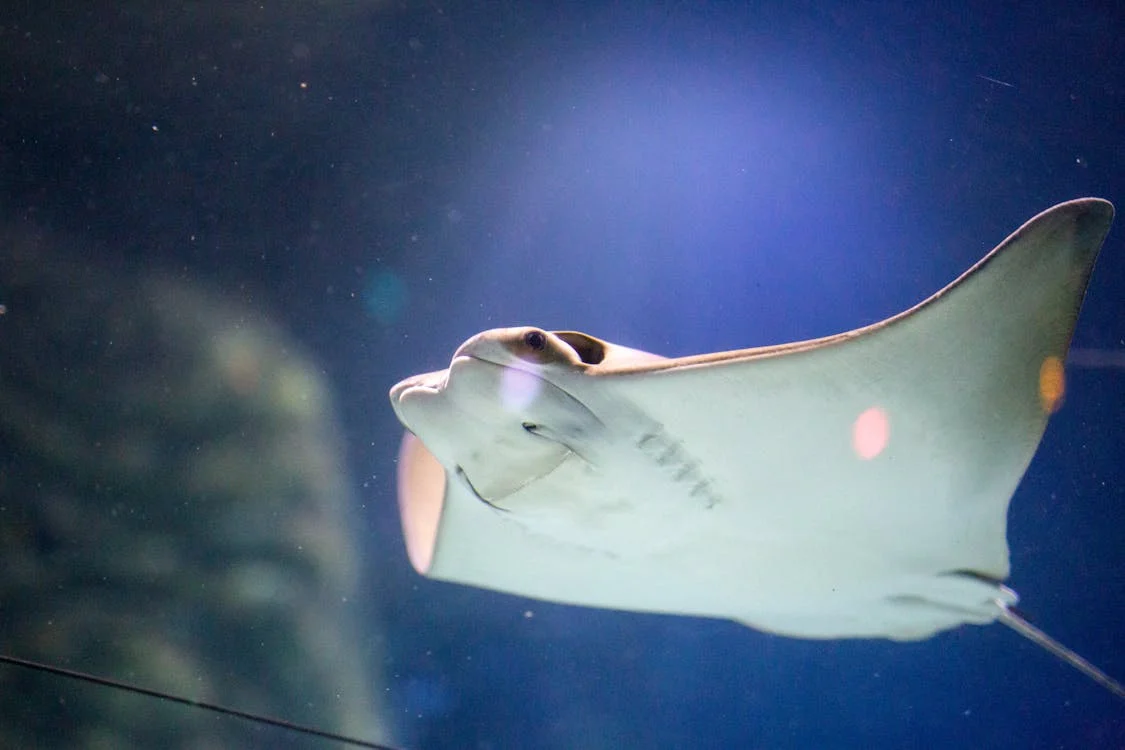
Typically, the Teacup Stingrays sport an elongated, pointed tail, contributing to their distinctive appearance. They also have relatively smaller eyes compared to their freshwater counterparts. With their flat bodies, these distinct critters encompass about fourteen inches in diameter when fully grown. That doesn’t include their significant tail length, which adds much to their overall size.
Teacup stingrays are distinguished by their distinctive body shape and patterning, which are key to their identification.
Appearance
Teacup stingrays possess a unique disc-shaped body, which is instrumental in underwater gliding movements. The flatness of these stingrays contributes to their unusual appearance, allowing them to blend seamlessly with the sandy bottoms of their habitats.
Size
The size of teacup stingrays is relatively diminutive compared to other stingray species. As adults, they typically exhibit a disc width of 8 to 14 inches. Their compact size necessitates larger tanks for adequate accommodation within captivity, in which they can freely roam and exhibit natural behaviors.
Coloration
Their coloration is diverse and can include various shades, often featuring contrasting spots or patterns that aid in camouflage. The intricate design on the dorsal surface adds to their aesthetic charm and biological adaptation, making them both appealing to aquarium enthusiasts and elusive in their native environments.
Habitat Requirements
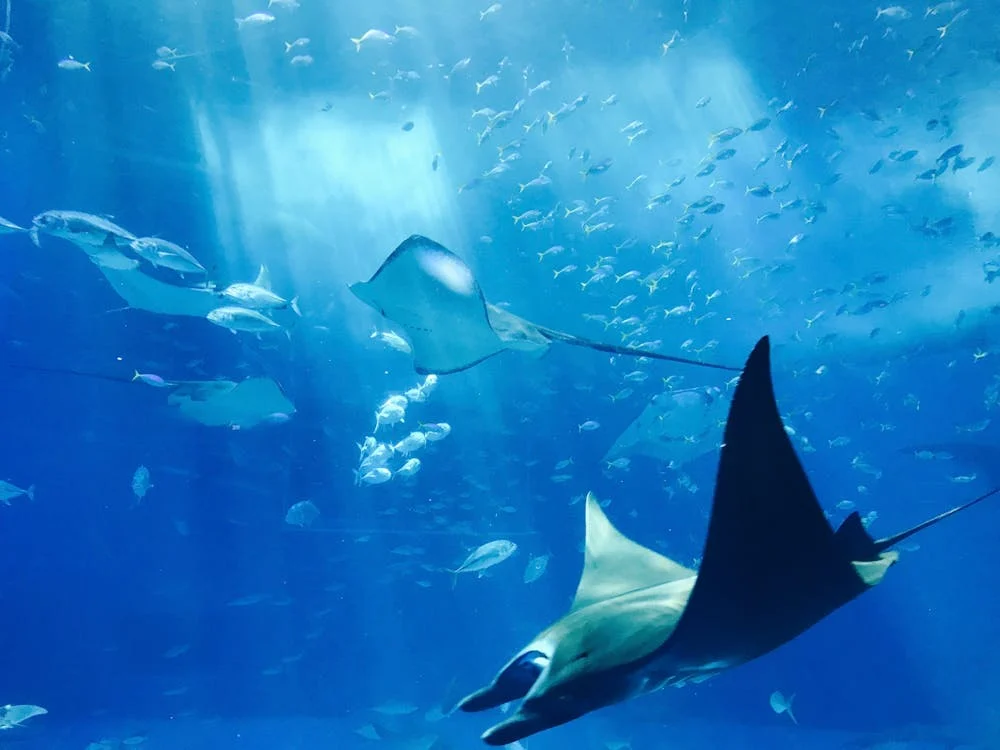
Your Teacup Stingray will thrive in a controlled environment with a pH level of around six or seven and the water temperature in the upper seventies or lower eighties (Fahrenheit). They can adapt well but require an experienced aquarium hand for their care.
Teacup stingrays demand specific living conditions to thrive. These conditions encompass the physical environment of their natural waterways and the replicated settings in captivity. Ensuring these needs are met is crucial for their well-being.
Natural Habitat
The teacup stingray, a diminutive member of the stingray family, is naturally found in the freshwater river systems of South America. Their habitat mainly comprises sandy bottoms interspersed with smooth rocks and aquatic vegetation. This environment is conducive to their unique behaviors, such as burrowing and foraging.
Aquarium Conditions
Aquarium Configuration: An aquarium intended for teacup stingrays should replicate their calm river conditions. It’s vital to provide them with ample space to maneuver.
- Minimum Size: 125 gallons for adults; 75-90 gallons for juveniles
- Recommended Size: 180 gallons or more for long-term housing
A rectangular tank with horizontal swimming room takes precedence over vertical height.
Substrate and Decorations: A sandy substrate topped with smooth rocks is ideal for mirroring their natural habitat and protecting their delicate undersides.
- Substrate: Sand, fine and without sharp edges
- Decorations: Smooth rocks, no sharp decorations
Water Conditions and Lighting:
- Temperature: 78-82°F (25-28°C)
- Water Quality: High filtration to manage nitrogenous waste
- Lighting: Subdued, simulating the shaded environments of natural waterways
It is essential that the tank’s conditions—including water quality, temperature, and lighting—remain stable to emulate the teacup stingray’s natural environment accurately.
Behavioral Traits
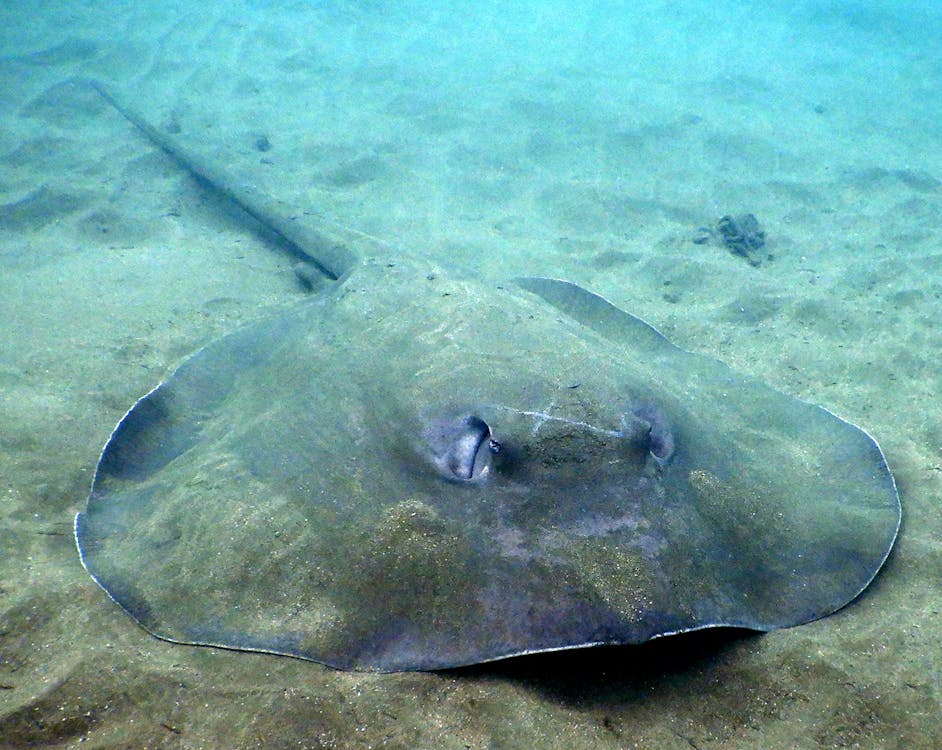
In the realm of aquatic life, teacup stingrays are recognized for their distinct behaviors and tailored feeding requirements. These bottom-dwelling carnivores exhibit unique traits that must be understood for their proper care.
Social Behavior
Teacup stingrays tend to be solitary yet peaceful creatures, often found resting at the bottom of their aquatic environment. While they are known for their non-aggressive temperament towards compatible tank mates, their social interactions are minimal. Optimal tank mates include peaceful community fish swimming at higher levels, allowing the stingrays ample bottom space. Fish species such as bichirs, arowanas, and severums can be suitable companions; however, ensuring a harmonious tank dynamic necessitates careful monitoring of interspecies behaviors.
Feeding Habits
As carnivorous entities, teacup stingrays require a diet rich in meaty foods. They typically consume live or frozen prey, including bloodworms, brine shrimp, and small fish pieces. Stingrays employ a sit-and-wait strategy, preferring to ambush their food rather than actively pursue it.
These predators often bury themselves in the substrate, striking swiftly when prey is detected. Providing diverse and high-quality nutrition is vital for their health, and adequate swimming space is needed to facilitate their natural foraging behavior.
Diet and Nutrition
Proper feeding and a carefully selected diet are crucial for the well-being and health of teacup stingrays. These aquatic creatures require specific nutrients to maintain their energy and vitality.
Feeding Techniques
Teacup stingrays exhibit a benthic feeding behavior, which means they forage at the bottom of their aquatic environment. Owners should mimic their natural hunting practices by supplying food directly to the tank’s substrate level, allowing stingrays to search and dig for their meals. This approach not only satisfies their natural instincts but also ensures that these shy eaters gain adequate nutrition. It’s important to maintain appropriate water temperature, typically between 75-81°F, to promote optimal digestion and metabolism during feeding.
Preferred Diet
A balanced diet for teacup stingrays includes a variety of meaty foods that are high in protein. Their dietary intake should consist of:
- Earthworms: A nutritious food source rich in protein.
- Blackworms and brine shrimp: These can be offered live or frozen to provide essential nutrients.
- Crustaceans: Integral for a well-rounded diet, helping intake necessary minerals.
- Krill: Another source of protein that can be served frozen or freeze-dried.
- Beef heart: Occasionally provided, but must be trimmed of fat and offered in small quantities to prevent health issues.
Additionally, cohabiting species such as Geophagus can be beneficial, as they sift through the substrate, potentially uncovering hidden food and stimulating the stingrays’ natural foraging behavior. The dietary plan should strike a balance, avoiding excessive feeding of fatty foods and ensuring each meal is size-appropriate for the stingray. Regular monitoring of their feeding habits and body condition is essential to adjust the diet as needed to maintain their health and prevent nutritional deficiencies.
Navigating through Aquarium Needs
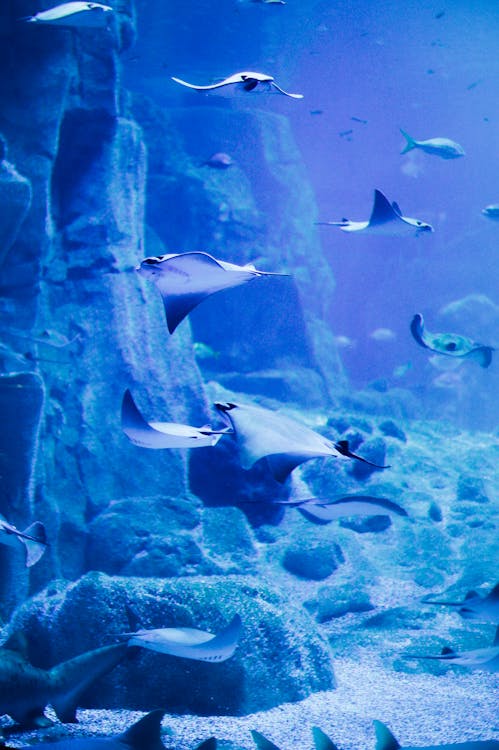
Teacup Stingrays, though small, need substantial space to swim and thrive. Regarding housing, a minimum one hundred twenty-five-gallon aquarium is non-negotiable. However, when space allows, these rays will noticeably appreciate something bigger.
Why are they so loved as aquarium hallmarks, you ask? Well:
- They are harmonious companions for other fish.
- Mostly, they stick to themselves and are happy in their live habitat.
- Males show occasional assertiveness during mating, adding excitement to an otherwise serene aquarium.
The Teacup Stingray’s Dietary Habits
No fancy feed for these beauties! A simple menu of earthworms, black worms, blood worms, or smaller fish keep them nourished and healthy.
Take Note: Teacup Stingrays are Venomous!
Fascinating as they are, it’s important to remember the Teacup Stingray’s vicious nature. They can deliver a stinging blow that, while not fatal, will demand immediate medical attention. To handle a sting:
- Put pressure on the stung area.
- Submerge the wound in hot, bearable water.
- Disinfect the area and promptly consult a medical professional.
However, these aquatic creatures demand substantial care, making them better suited for experienced handlers. Remember, they are just as dangerous as beautiful, and proper caution and care should be exercised when handling these underwater gems.
Related Resouces: